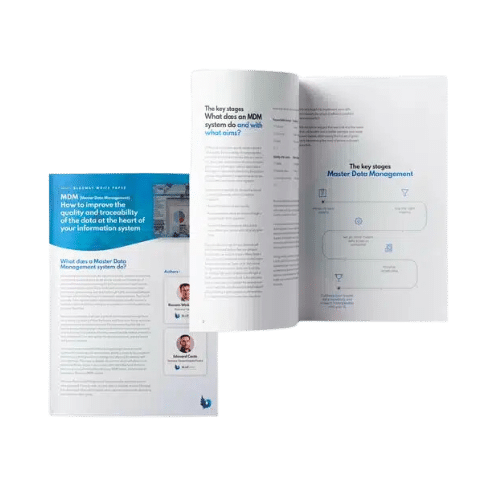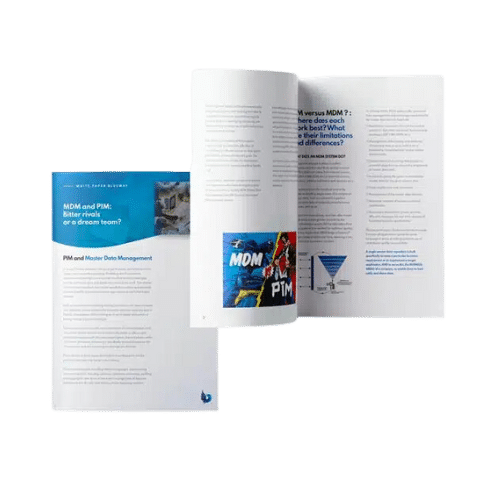As business goes global, organisations are driven to undergo major transformations, to reorganise and merge, all of which makes an already fragmented information system even more complicated. To impose some order and make the architecture upgradeable, IT departments have re-engineered the structure to include master data repositories following a SOA (data + processes) philosophy to make effective master data management possible.
These master data repositories also help meet three business issues:
- Regulations in relation to data demanding ever more transparency and justification;
- The competitive environment requires businesses to always stay one step ahead of the competition. This in turn requires an ability to predict and anticipate so as to design new products and services to satisfy both customers AND shareholders;
- Businesses are more customer-centric than ever, which entails a need for up-to-date and relevant data about customers, and to be able to slice information up and share it across various applications and functional departments, internally and externally.
What is master data?
Businesses now have the resources to store impressive quantities of data. Some of this mountain of information is useful to more than one business process, and is consequently shared within the business’ major vertical IT systems, such as ERP (Enterprise Resource Planning), CRM (Customer Relationship Management), PLM (Product Lifecycle Management), WMS (Warehouse Management Systems) and PIM (Product information management). However, limiting the extent to which it is shared within these vertical applications impedes the cross-functional use of data across the organisation. Actual business processes do not stop at the boundaries between vertical IT applications.
The business therefore needs to ask which data is the most important, the most critical and also the most relevant for the organisation.
The idea of master data appeared in 2003 as Master Data Management (MDM) took off.
Master data can cover a range of aspects:
- Product data as found in the retail sector or in manufacturing with the addition of any services also offered
- Third party data held about customers and suppliers
- Organisational data, such as employees
- Financial data
Once identified, the challenge is to build a master data repository, a centralised master record to enable continuous improvements in quality, traceability of changes and the building of up-to-date master data.

Master Data Management : data quality and traceability at the heart of your information system
Five top tips for managing master data
Before implementing a Master Data Management system, it is advisable to examine the direction of travel for your master data:
- Purpose behind storing it
- Level of complexity
- Stability of the system
- Nature of objects it handles
Such an inventory should also include the volume of data, its criticality, the source and target applications, and the business processes and rules having an effect on data quality.
It is then a matter of establishing how this master data repository is to be run, in terms of who approves or validates data, who decides over disputes, who has which level of access rights & permissions, and how the data held in the master data repository is circulated to other systems.
The following five steps will lead to successful master data management:
1 – Measure the quality of your master data
Data quality is assessed on the basis of the expected usage, with three possible approaches, namely goal-oriented, processing-oriented and semantic-oriented classifications.
Our focus when measuring the quality of master data will be on profiling, completeness, redundancy and master data standardisation.
2 – Use the right metrics
The metrics used can measure performance (data entry work saved, improved productivity, increased SLA, shorter cycles, etc.) or the MDM system’s impact on IS organisation, the installation of new components, business process management, etc.

MDM versus PIM: bitter rivals or a dream team ?
3 – Set a scope for your master data management
This is the point where you determine the milestones that will lead to achieving your objectives. For each phase in your project, it will be important to involve both the functional business departments and the IT department to ratify feasibility both technically and in terms of human resources:
- Data housekeeping
- Initialising and importing to MDM
- Interoperability between MDM with source and target applications in your IS
- Implementation and future developments in the MDM
4 – Initialise target data
The first major step towards implementation is to initialise the master data repository. It is possible to populate this master data repository as and when data is available to be entered or updated; equally it is possible to initialise it by adding as much data as possible once it has been built.
In both cases, creating the master data repository requires:
- The host database to be defined and created;
- The creation and instantiation of checks and confirmations required when records are created;
- Transcoding rules and dictionaries to be set up;
- The data forming the basis of the master data repository to be loaded.
5 – Cultivate your master data repository and plan to make it interoperable with your IS
A master data repository is a living thing, continuously updated and moving forwards, forming the company’s benchmark data silo. It is therefore important to properly define:
- The instantiation of checks and confirmations required when records are updated;
- How and when data record history is kept;
- Data deletion rules;
- Policies to be followed for secure access to data.
Beyond these few aspects, it is advisable never to lose sight of the fact that an MDM project is going to handle a huge amount of data, and the rules set for including data and keeping data history can quickly prove to generate even larger volumes.
If your information system so allows, you can design a service-oriented architecture and publish Web services to provide access to data and the ability to update it.
In terms of resources for master data management, the approach we suggest, using the Blueway platform’s Data Governance module, is designed to be straightforward and pragmatic.

Want to discuss your data management challenges with an expert?





